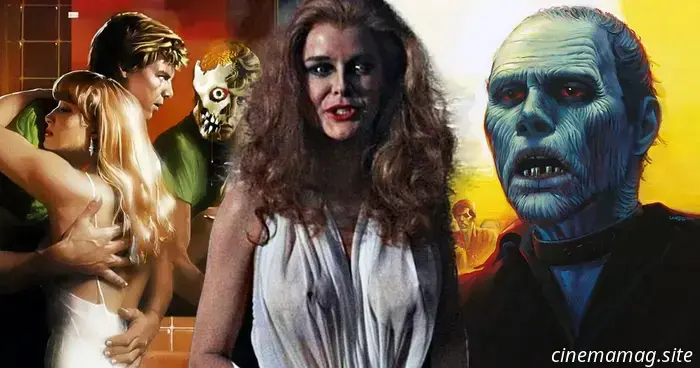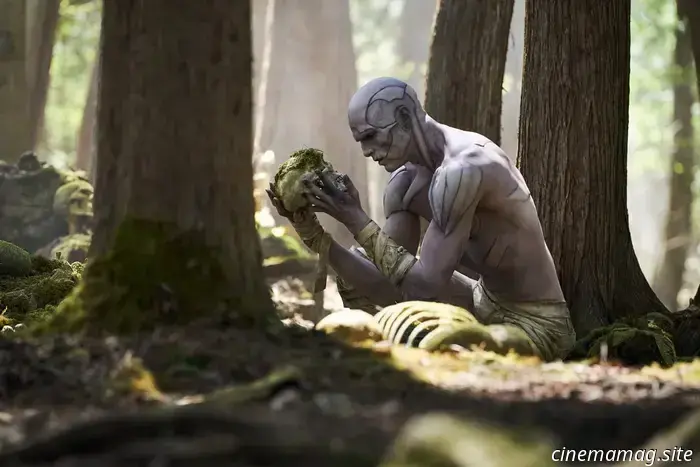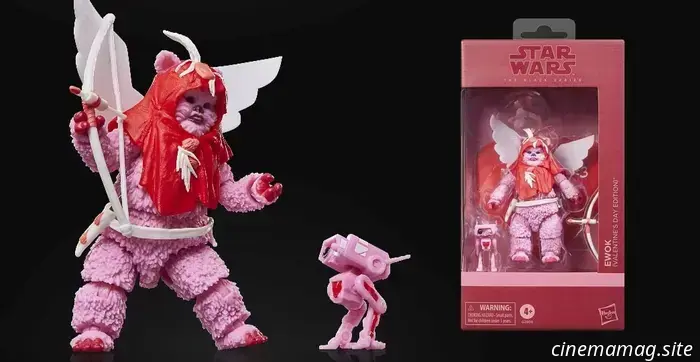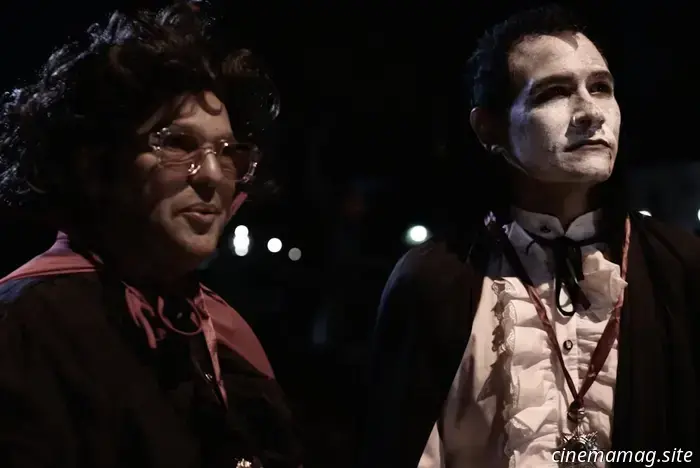
The Ten Best Horror Films of 1985
Casey Chong takes a journey back 40 years to reflect on the top horror films of 1985…
While 1985 was a standout year for blockbuster hits like Back to the Future, The Goonies, and Rambo: First Blood Part II, it also marked significant achievements in the horror genre. This year showcased a notable array of creativity and experimentation by intertwining different elements. Here’s our selected list of the ten best horror films from 1985…
**House**
Steve Miner’s interpretation of the classic haunted-house narrative in the aptly named House begins with a delivery boy’s surprising discovery, leading to Roger Cobb (William Katt) moving into his late aunt Elizabeth's (Susan French) home to compose his latest novel. Initially, Miner takes a straightforward approach, but the film becomes increasingly bizarre as it unfolds, with monsters lurking within the house.
The abrupt transition between serious and comedic moments feels out of place, and Roger’s Vietnam War subplot seems oddly detached. In comparison to Miner’s previous work, particularly the two Friday the 13th films, House is relatively moderate in its horror violence and gore. Nonetheless, the film's uneven blend of horror and comedy possesses a certain irreverent charm. Back in 1985, House was quite successful, earning over $22 million from a $3 million budget, which led to three sequels released between 1987 and 1992.
**Phenomena**
In a fusion of giallo elements, Dario Argento, who co-wrote the script with Franco Ferrini, tells the story of teenage Jennifer Corvino (a young Jennifer Connelly in one of her early roles), who has psychic powers and the ability to communicate with insects. The film is set in an elite boarding school in the Swiss Alps, where a series of horrific murders involving young girls become central to the plot.
While the pacing can be erratic and the narrative often wanders, Phenomena does feature noteworthy moments, particularly Jennifer Connelly’s childlike innocence and angelic presence that elevate the film. Argento’s unique visual style produces a compelling blend of dreamlike sequences, graphic deaths (notably a decapitation scene), and a reference to Don’t Look Now’s shocking moment. Additionally, the film opens strongly with a teenage Danish tourist missing a bus and finding herself alone and being pursued by an unseen killer.
**Friday the 13th: A New Beginning**
In 1985, both Friday the 13th and A Nightmare on Elm Street aimed to shift their iconic franchises in new directions beyond the standard slasher formula, with varied outcomes. In Friday the 13th: A New Beginning, director and co-writer Danny Steinmann reinvents the fifth installment as a murder mystery. The plot centers on whether Tommy Jarvis (John Shepherd), now a teenager (previously portrayed by Corey Feldman), might be following in the footsteps of the infamous Jason Voorhees.
The film offers various red herrings that lead audiences to consider Tommy as a potential copycat or to question Jason’s supposed demise at the end of Friday the 13th: The Final Chapter. While the murder-mystery twist provides a refreshing angle, the execution tends to feel disjointed. Steinmann retains elements of the franchise’s established formula, delivering the expected combination of gore, violence, and gratuitous nudity.
**A Nightmare on Elm Street 2: Freddy’s Revenge**
Among the sequels in the Nightmare on Elm Street series, A Nightmare on Elm Street 2: Freddy’s Revenge is often regarded as a departure from the original. It stands in stark contrast to Wes Craven’s superior 1984 classic by shifting from terrifying dream-invasion horror to themes of possession. This shift is particularly evident with a new protagonist, Jesse Walsh (played by Mark Patton), whose family has moved into a new suburban home previously inhabited by the Thompsons. Following this move, Jesse experiences recurring nightmares about Freddy Krueger, beginning with an ordinary day on a school bus turning into a surreal nightmare.
Despite its subtitle, “Freddy’s Revenge” is not as straightforward as one might expect. The narrative doesn’t strictly follow the idea of the child killer taking revenge against his previous foes. That said, Jack Sholder, who later directed The Hidden, succeeds in making elements of the film stand out. The underlying gay subtext, with Freddy symbolizing Jesse’s repressed sexual identity as a closeted homosexual, is particularly relevant today. The sequel is also filled with graphic gore and violence, such as the pool party massacre and a striking scene where Freddy possesses Jesse's body and bursts out of his abdomen, reminiscent of Alien's chest-bursting moment.
**Demons**
Picture watching a brutal horror film in a theater, only for chaos to erupt when an audience member is scratched by a bizarre mask displayed in the lobby. This scratch metamorphoses her into a raven











Other articles
 A new trailer for Guillermo del Toro’s Frankenstein has been released.
As Frankenstein is currently screening in select theaters, Netflix has released the final trailer for Guillermo del Toro’s adaptation of Mary Shelley’s timeless story in preparation for its debut on the streaming platform...
A new trailer for Guillermo del Toro’s Frankenstein has been released.
As Frankenstein is currently screening in select theaters, Netflix has released the final trailer for Guillermo del Toro’s adaptation of Mary Shelley’s timeless story in preparation for its debut on the streaming platform...
 Comic Book Review – Dick Tracy Halloween Edition
Andrew Newton evaluates the Dick Tracy Halloween Special… Mad Cave’s Dick Tracy Halloween Special infuses a spooky allure into the classic detective's universe, combining pulp crime with lighthearted frights…
Comic Book Review – Dick Tracy Halloween Edition
Andrew Newton evaluates the Dick Tracy Halloween Special… Mad Cave’s Dick Tracy Halloween Special infuses a spooky allure into the classic detective's universe, combining pulp crime with lighthearted frights…
 Star Wars: The Black Series introduces a seasonal Valentine’s Day Edition Ewok figure.
During Italy’s Lucca Comics & Games 2025 convention, Hasbro revealed a new seasonal addition to Star Wars: The Black Series, introducing the Valentine’s Day Edition Ewok figure, featuring…
Star Wars: The Black Series introduces a seasonal Valentine’s Day Edition Ewok figure.
During Italy’s Lucca Comics & Games 2025 convention, Hasbro revealed a new seasonal addition to Star Wars: The Black Series, introducing the Valentine’s Day Edition Ewok figure, featuring…
 15 Facts About The Silence of the Lambs That an Average Person Might Not Be Aware Of
Here are 15 details from Silence of the Lambs that you might have overlooked, unless you're part of the Behavioral Science Unit.
15 Facts About The Silence of the Lambs That an Average Person Might Not Be Aware Of
Here are 15 details from Silence of the Lambs that you might have overlooked, unless you're part of the Behavioral Science Unit.
 Jaime Zevallos and Nicholas Turturro introduce Vampire For Hire just in time for Halloween.
Actor-filmmaker Jaime Zevallos (from Marvel’s Cloak & Dagger) and Nicholas Turturro (from Apple TV+’s Highest 2 Lowest) feature in Vampire For Hire, a horror-comedy that bites into celebrity culture...
Jaime Zevallos and Nicholas Turturro introduce Vampire For Hire just in time for Halloween.
Actor-filmmaker Jaime Zevallos (from Marvel’s Cloak & Dagger) and Nicholas Turturro (from Apple TV+’s Highest 2 Lowest) feature in Vampire For Hire, a horror-comedy that bites into celebrity culture...
The Ten Best Horror Films of 1985
Casey Chong journeys back four decades to explore the finest horror films of 1985. That year was significant for blockbuster movies that achieved notable pop-culture status, including Back to the Fut…
